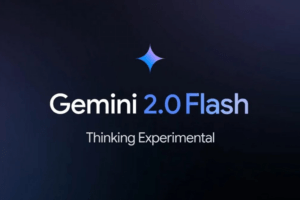Machine Learning: The Master of Analysis and Prediction
Types of Machine Learning Algorithms
- Supervised Learning: Learns from labeled data where the desired outcome is known. This approach is used for tasks like spam email detection or image classification.
- Unsupervised Learning: Identifies patterns in unlabeled data, revealing hidden structures without predefined outcomes. It’s used in clustering tasks and anomaly detection.
Practical Applications of Machine Learning
- Classification: Identifying spam emails or categorizing images.
- Recommendation Systems: Suggesting movies or products based on user preferences.
- Predictive Maintenance: Anticipating equipment failures based on sensor data.
- Fraud Detection: Flagging suspicious transactions by detecting anomalies in financial patterns.
Generative AI: The Artist of Creation
Generative AI shifts focus from analysis to creation, producing entirely new content that mimics the data it has learned from. It operates akin to a painter studying various techniques and styles before creating original artwork. In the digital realm, generative AI algorithms create new data such as images, texts, music, or even pharmaceutical molecules.
Techniques in Generative AI
One prominent technique is Generative Adversarial Networks (GANs), which pit two models against each other: a generator creating new content and a discriminator evaluating its authenticity. This competitive process refines the generator’s ability to produce highly realistic outputs.
Applications of Generative AI
- Image Generation: Creating lifelike portraits, landscapes, or product visuals.
- Text Generation: Writing articles, poetry, or generating code snippets.
- Music Composition: Producing original compositions across different genres.
- Drug Discovery: Designing novel molecules with therapeutic potential.
Key Differences: Machine Learning vs. Generative AI
| Feature | Machine Learning | Generative AI |
|---|---|---|
| Goal | Analyze data, make predictions | Create new data based on learned patterns |
| Data Used | Labeled or unlabeled data for analysis | Existing data as inspiration for new creations |
| Output | Predictions, classifications | New images, texts, music, etc. |
| Examples | Recommending movies, fraud detection | Generating artwork, composing music |
Collaborative Potential and Future Innovations
Machine learning and generative AI complement each other in achieving more sophisticated outcomes. For instance, machine learning models can analyze user preferences to tailor generative AI outputs, enhancing personalized recommendations or creative content generation. As these technologies evolve, they promise transformative impacts across various sectors, including healthcare, entertainment, manufacturing, and scientific research.
Understanding Applications and Navigating the Hype
While often conflated, understanding the nuanced distinctions between machine learning and generative AI is essential for evaluating their practical applications. These technologies hold immense potential but require informed decision-making to leverage effectively in real-world scenarios. By demystifying these buzzwords, we empower ourselves to harness AI advancements responsibly and innovatively.
Conclusion
In conclusion, machine learning and generative AI represent distinct yet complementary facets of artificial intelligence. Machine learning excels in data analysis and predictive tasks, while generative AI focuses on creative content generation based on learned patterns. By grasping these differences, businesses and individuals can harness AI technologies more effectively, driving innovation and addressing complex challenges across diverse industries.
















Add Comment